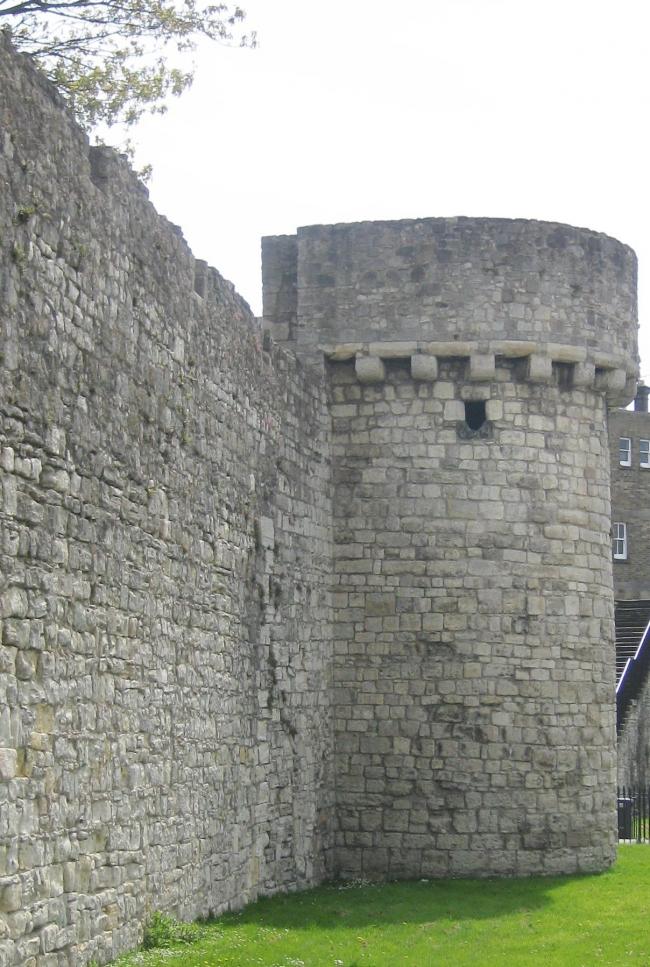NEW building development over recent years has made the medieval walls of Southampton more visible and this will continue when the Bargate development opens up the eastern section of the north walls for everyone to enjoy.
Many visitors to Southampton are familiar with the city walls of Chester and York but are surprised when they see Southampton’s historic walls.
Sir Nikolaus Pevsner, one of Britain's most highly regarded academics, broadcast and wrote articles on architectural history and is best known for his series of county guides on the Buildings of England. He said of our walls: "In all Britain there are few, if any, examples of medieval urban defences as impressive as those in Southampton".
He went on to say that Southampton's town walls are more varied and interesting than those at York or Conway and that our Bargate is "probably the finest and certainly the most complex town gateway in Britain".
We know the Bargate was started around 1180 and that the walls were finally completed at the end of the 14th century, meaning that it took approximately 200 years to completely enclose the town.

When the walls were started the principal weapon of warfare was the longbow and, when completed, cannon were in common use. These changes in the technology of war are reflected in the walls and towers and this makes them so interesting.
The walls themselves extended over a distance of a mile and a quarter and originally contained seven principal gateways and 29 towers. The walls are about 6ft thick and their height varies from about twelve feet to over twenty feet in places.
About half of the walls remain today. A unique stretch of walls extends for most of the southern portion of the western wall and this was completed in the late 14th century.
Local traders had resisted constructing walls on this section as it would restrict their access to the quays which were so important for business. This left a weakness in the town's defences which was exploited by French and Genoese raiders in 1338.
Walls were later constructed along this length incorporating the quayside walls of the traders' homes and warehouses and their windows and doors are still visible in this section today.

To strengthen this wall it was reinforced with buttresses and arches to support the battlements thus creating the important section we know as the Arcades.
Of the principal gateways the East Gate, Pilgrim's Gate and the Water Gate have been lost but the important West Gate and God's House Gate are still in use as thoroughfares and the Friar's Gate can still be seen.
The West Gate was the last to be built at the end of the 14th century and is interesting in that it was designed to accommodate cannon.
There are two minor gateways, the Blue Anchor Postern which leads to the lane that runs alongside the Tudor House and the Castle Watergate.
Of the towers several important ones still exist. Polymond Tower, which will be visible again once the Bargate development is complete, and Arundel Tower mark the east and west extremities respectively of the northern section of the walls.
Catchcold Tower can be seen from the concourse by the West-Quay shops. Perhaps most important of all the towers is God's House Tower currently being refurbished and soon to be opened as an Arts Centre among other things.

It was the Plantagenet Kings starting with Henry II and concluding with Henry IV who drove the building of Southampton's town walls and the many gates and towers however the cost had to be met by the townsfolk of Southampton.
A more detailed description of the construction of the walls and other tales of old Southampton can be enjoyed on an historic walk of the walls or you can simply enjoy them as a spectacle while gently strolling around what are considered to be the most important medieval walls in Britain.#
By Godfrey Collyer - guide with SeeSouthampton.co.uk.












Comments: Our rules
We want our comments to be a lively and valuable part of our community - a place where readers can debate and engage with the most important local issues. The ability to comment on our stories is a privilege, not a right, however, and that privilege may be withdrawn if it is abused or misused.
Please report any comments that break our rules.
Read the rules hereLast Updated:
Report this comment Cancel